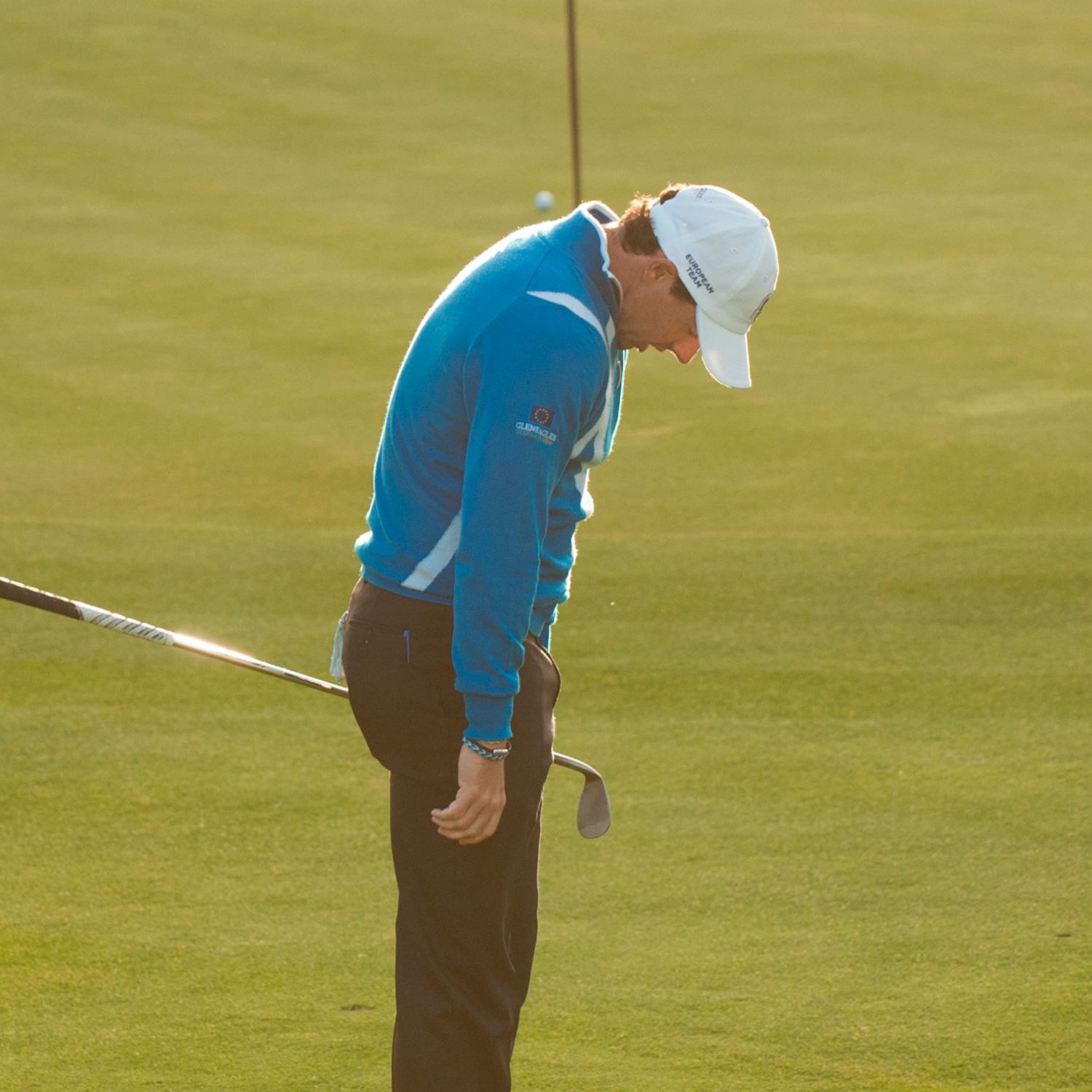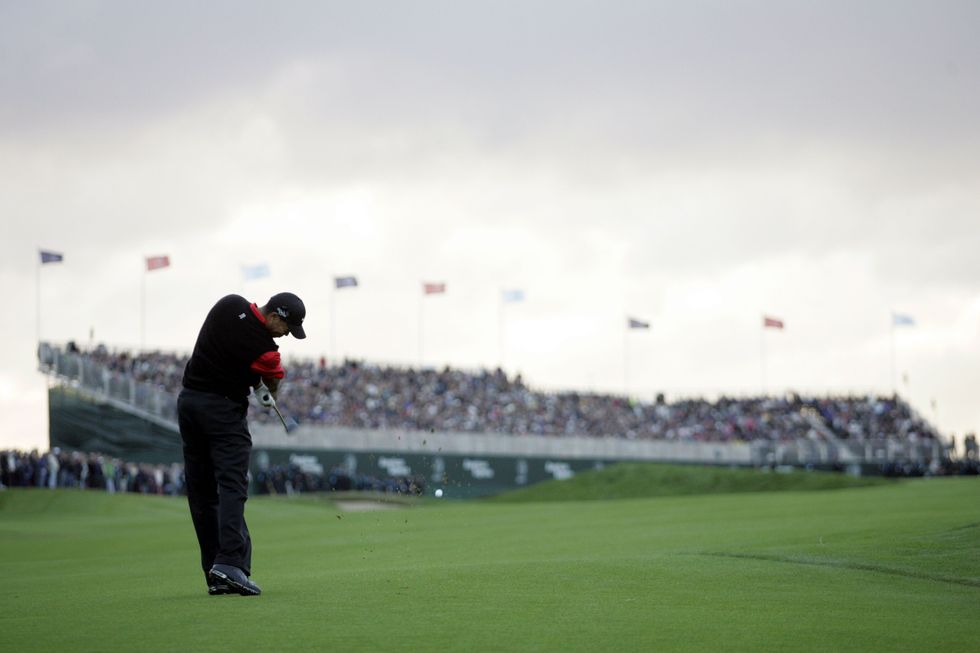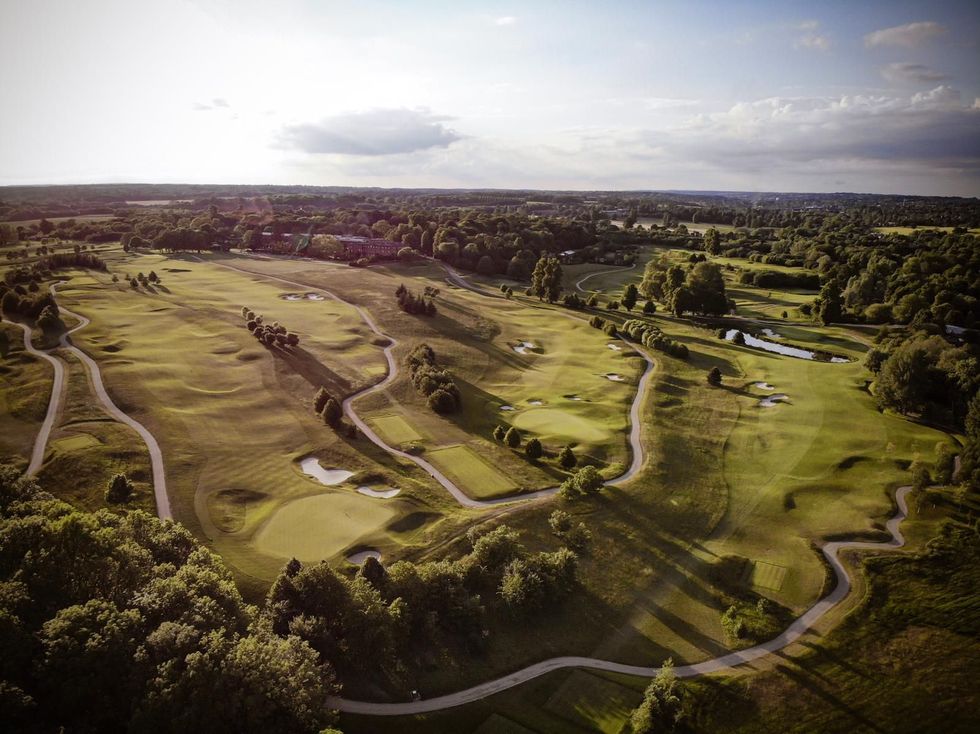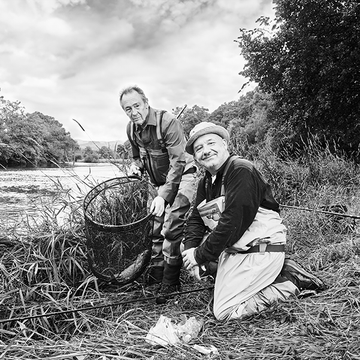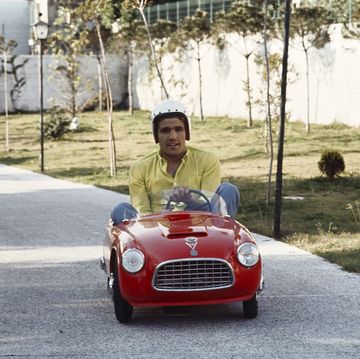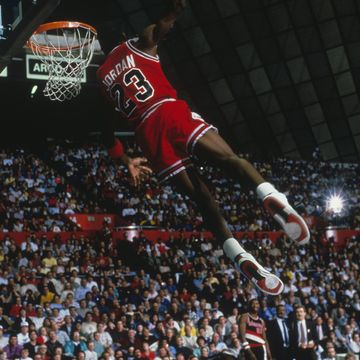Not many things have emerged from the last 12 months in a stronger place than they started, but weirdly golf seems to be one of them.
Participation is up, equipment sales are up, and its newsworthy-status as the perfect Covid-era game, where social distancing comes as standard, is reportedly bringing new and – whisper it – younger people into the fray. There’s even an emerging generation of fashion brands trying to make golf clothing cool; admittedly, no easy task.
What hasn’t changed about the game, of course, is how damn hard it is.
I realised last autumn that I’d been playing on and off for thirty years. This in itself came as quite a shock. More shocking still, why wasn’t I any good?
The Backstory
It goes without saying to anyone that’s played it, but golf doesn’t really work like this. In fact, it seems to be the exception that proves the 10,000 hours rule.
As a streaky 15-handicapper, on a good day it could all click. But just as easily, with no word of warning, the wheels could come off spectacularly. In golf terms, it’s a tale as old as time. A frustrating tale that, as it happens, I’ve written about before.
To complicate things further, golf is actually a series of mini-games or disciplines – driving, iron play, wedges, putting. Invariably, when one area is going well, another will misfire horribly.
Consistent golf requires every shot in the bag to at least be repeatable. And it’s consistency that golfers crave, like shipwrecked sailors in search of terra firma.
There’s the option of tuition, of course, but when you play this infrequently, can you really justify having another professional on your monthly payroll, on top of golf’s many other costs?
Instead, I liked to watch ‘how to’ videos on YouTube the night before a game, resulting in me trying to crash learn a list of ‘quick’ fixes and transformative swing thoughts longer than some best man speeches.
This is the other problem with golf; it attracts, or perhaps creates, an obsessive, tinkering approach. It’s safe to say it doesn’t help if you’re tinkering and obsessing on the wrong things.
The Makeover
What I really wanted, indeed needed, was the golfing equivalent of a makeover; a short, intensive, all-inclusive, no-strings attached overhaul that would assess every facet of my very amateurish game and spit me out the other side.
In an Eighties film, it would be cut as a montage sequence and I would emerge with a warrior-like mindset and a swing like Adam Scott. Although at this stage, I’d settle for Adam Sandler, to be honest.
It’s how I came to discover ‘The Game Changer’ package being offered at The Grove in Hertfordshire, which appeared to be tailor-made for my brief.
Over two days, I booked in under the tutelage of The Grove’s Head Golf Professional, Tom Minshull, comprising 2 range sessions, one Trackman session, one short game session, one putting session and finishing up with a playing lesson over nine holes of The Grove’s championship course.
The Grove is a bit of a one-off in the UK. Built in 1995, it’s more of a modern golf resort than a club; there’s no membership, no dress code, no handicap restrictions or disapproving old boys to worry about. It combines very high – some would say American – service levels with a nice and relaxed feel.
Best of all, it has a serious golf course, impeccably maintained and maturing well. It hosted a World Golf Championship back in 2006, won by Tiger Woods no less, who famously eagled the ninth hole in three out of the four rounds.
Long Game
After a quick chat about my personal golfing backstory, which thankfully doesn’t stray too far into psychiatrist couch territory, we head to The Grove’s tour truck next to the driving range, a high-tech unit similar to those that travel around on the pro tour, containing TrackMan and club fitting facilities, and one side of which opens out on to the range for dedicated tuition.
The finite timeframe we are operating with requires Tom to quickly zero in on the immediate changes that will bring the biggest results, rather than implementing any major swing rebuilds. He also has to communicate these in a way that I can wrap my head around, rather than flooding it with too many details.
After hitting a few seven irons, it quickly transpires that my takeaway is on a path much too far inside the line and my first big change will be trying to groove a new path that keeps the club on a straighter trajectory. It doesn’t take long before I’m hitting it much more accurately.
An even quicker win is ball position. Tom suggests moving it back in my stance and the results are immediate. It might explain why I’ve been hitting my irons fat for years. This realisation alone is worth the visit.
Similarly, how I line up and aim each shot has always been an issue. Get this wrong and it can lead to other problems, not just accuracy.
A drill for rotation proves a little trickier to master but we have two days ahead of us, which is itself a nice feeling, as opposed to that sense of being on the clock with conventional 45-minute lessons.
Short Game
Wedges and putters are often called the scoring clubs and yet so many amateurs like me neglect to practice them anywhere near enough, preferring to repeatedly smash their driver on the range instead.
Tom focuses on honing a reliable system and checklist for each short game discipline.
Within half an hour, I have a go-to bunker shot, helped by the revelation of hitting it with a full swing each time and using different clubs to vary the distance.
I hadn’t been able to rely on my chipping for some time and had lost my confidence with it. Tom narrowed my stance, reduced my overly wristy flick technique, and within minutes I was striking crisp chips on demand.
After lunch, we hit the putting green. At any level of the game, around 40 per cent of shots hit in a round will be putts, making it by far the easiest and quickest way for an amateur to improve their scorecard.
We worked on three basic moves to help improve chances of holing out but also minimise the dreaded and all too frequent three-putt.
Firstly, swinging the putter back and through on a much squarer path. Next, lining up where you want to start the ball using the line printed on most golf balls. Why had I never done this?
And thirdly, grooving a system for distance control using your backswing as marker points; inside your right foot for short putts, on your right foot for medium putts, and outside it for long ones.
On the Course
The next morning, another range session helped recap the key points and then we hit the course.
As well as putting the changes to the test in real scenarios, a playing lesson gives Tom the chance to tackle another neglected amateur area – course management, and the oh so critical mental side of the game, which in my case could crumble after a single mishit shot.
With this in mind, we work on establishing a simple pre-shot routine which comprises aim, visualisation, the sensation you’re looking for in your practice swing and, finally, hitting the thing.
With no one behind us, we even get to hit the same shots a few times.
The most noticeable difference from my usual game was scoring. Even though I wasn’t striking the ball brilliantly, my new putting and chipping system was keeping me in every hole.
The only issue was my driving. Whatever we tried, they kept swerving right. An old failing.
Tom spotted an odd move in my downswing which finally and fatefully led to me hitting one straight on the very last hole.
Ever patient and encouraging, he dropped to his knees in mock gratitude that the penny had finally dropped, or some greater power had intervened.
The Verdict
It’s one thing to feel good about your game when there’s a pro alongside you. It’s another when you’re all on your own again.
Tom sent an email summary of the things we’d been working on, with some video clips form the tour truck, and drills to focus on before my next round.
There was one problem. Lockdown two began the day after we finished. Which meant my next round wasn’t until golf returned officially on 29 March 2021 – four months later.
By this time I’d forgotten how to talk, let alone how to integrate Tom’s changes into my golf swing.
I reread his notes the night before I played and arrived at Stoke Park a couple of hours early to try to channel one of our range sessions.
On the front nine, everything clicked. Having started well, I began to feel confident over every shot. Six out of nine pars and five of them with makable birdie putts (all missed); for me, these were genuinely game-changing numbers in their own right.
The second nine was certainly sketchier. Maybe tiredness kicked in, maybe such dizzying standards were impossible to sustain. Most tellingly, though, it was during these lows that I noticed the biggest change in my approach.
Whenever I hit a bad one, I went back to my basic checklist and reset. Instead of descending into a negative spiral where one bad shot follows another, for the first time in three decades of golf I now had something to fall back on. I was playing the game instead of fearing it.
This is what I’d always wanted. To turn up to the course with an approach that at least made the best use of the game I already had. And it turns out, it wasn’t so bad after all.
The Grove’s Game-Changer package starts at £399
Like this article? Sign up to our newsletter to get more articles like this delivered straight to your inbox
Need some positivity right now? Subscribe to Esquire now for a hit of style, fitness, culture and advice from the experts
